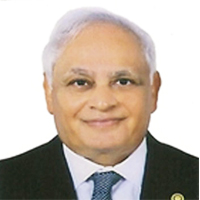A flow perfusion bioreactor with controlled mechanical stimulation: Application in cartilage tissue engineering and beyond
Published on: 13th June, 2018
OCLC Number/Unique Identifier: 7815003397
To repair articular cartilage (AC) defects in osteoarthritic patients, one approach is to engineer three-dimensional grafts with physicochemical properties similar to endogenous AC. Such grafts can be grown in bioreactors that provide environmental conditions favoring chondrogenesis. Studies show mechanical stimulation during the culturing process greatly enhances development of functional engineered grafts. A review of literature on bioreactor options reveals a lack of capacity to simultaneously stimulate cells with a combination of shear stress and oscillating hydrostatic pressure, both of which are important parts of the in vivo AC environment. It is hypothesized that combining both forces in a new bioreactor design will contribute to better AC tissue growth. In this paper, we provide a brief review of bioreactors and describe a new computer-controlled perfusion and pressurized bioreactor system, and the novelty of its control programming features for service in a host of applications. We briefly summarize results on synergistic effects in employing perfusion, oscillating hydrostatic pressure in a scaffold free environment and with the addition of encapsulation for inducing chondrogenesis. We further describe efforts to modify the newly developed system to include a continuous flow and pressurized centrifugal mode to enhance further the capabilities for inclusion of very high shear stresses. Applications for several other cell and tissue engineering approaches are discussed.
Preliminary Report on the Effect of Mesenchymal Stem Cell Therapy in Patients with Chronic Lung Allograft Dysfunction
Published on: 28th August, 2018
OCLC Number/Unique Identifier: 7844548189
Background: Mesenchymal stem cell (MSC) effects can shift immune responses toward anti-inflammatory and tolerogenic phenotypes, potentially helping patients with bronchiolitis obliterans syndrome (BOS).
Methods: We evaluated the effect of infusing allogeneic MSC intravenously in 9 patients with moderate BOS refractory to standard therapy who were not candidates for retransplant, dividing them into 3 dosing groups: Group 1, 1×106 MSC/kg (n=3); Group 2, 2×106 MSC/kg (n=3); and Group 3, 4×106 MSC/kg (n=3). We recorded pulmonary function tests, laboratory variables, and serum biomarkers pre- and post-MSC infusion.
Results: These patients had significant decline in forced vital capacity (FVC) and forced expiratory volume in 1 second (FEV1) over 1 year pre-MSC infusion (mean ± SD) FVC, 3.11±0.98 L, and FEV1 1.99+0.64 L versus FVC 2.58±1.03 and FEV1 1.61±0.52 just before infusion (P<0.05); representing a mean loss of 530 mL in FVC and 374 mL in FEV1 over 12 months. One year post-MSC infusion, mean FVC and FEV1 increased to 2.66±1.01 L and 1.63±0.55 L, respectively (changes no longer significant compared to before MSC infusion). Patients in Group 1 showed elevation of tolerance-inducing T regulatory cells and increased levels of epidermal growth factor. Tolerance-inducing Th-2 cytokines increased in Groups 1 and 2. These changes were not significantly different in these small sub-groups.
Conclusion: MSC infusion appears to slow down or reverse the progressive decline in lung function in some patients with moderate BOS, possibly by inducing anti-inflammatory effects and promoting cell proliferation and angiogenesis.
Active gaming and self-paced exercise: A self-determination perspective
Published on: 23rd March, 2018
OCLC Number/Unique Identifier: 7493576458
Purpose: This study aimed to identify physical activity, enjoyment, and factors for future activity between an active video game (AVG) condition and self-paced exercise (SPE) among college-aged students.
Methods: Thirty college-aged volunteers (age=22±1.68 years) completed 4-45 minute physical activity sessions (2 AVG; 2 self-paced). A survey and a brief structured interview followed.
Results: Overall, participants expended more calories, accumulated more steps, and more physical activity during SPE; however, participants in the AVG condition met daily exercise recommendations. The majority of participants (81%) enjoyed playing the AVG. Autonomy and competence were found as common themes among those who preferred the SPE condition; whereas, lack of knowledge and exercise variety were emergent themes among those who preferred AVG.
Conclusions: This study provides evidence that college students could meet daily exercise recommendations by participating in AVG interventions; although AVGs that provided autonomy and allowed users to demonstrate competence would be preferable.
Microbiome-Gut-Brain Axis: AI Insights
Published on: 25th June, 2024
Microbiome-gut-brain axis represents a complex, bidirectional communication network connecting the gastrointestinal tract and its microbial populations with the central nervous system (CNS). This complex system is important for maintaining physiological homeostasis and has significant implications for mental health. The human gut has trillions of microorganisms, collectively termed gut microbiota, which play important roles in digestion, immune function, and production of various metabolites. Some current research shows that these microorganisms strongly influence the brain function and behaviour of individuals, forming the basis of the microbiome-gut-brain axis. The communication between gut microbiota and the brain occurs via multiple pathways: neural pathway (e.g., vagus nerve), endocrine pathway (e.g., hormone production), immune pathway (e.g., inflammation modulation), and metabolic pathway (e.g., production of short-chain fatty acids). Dysbiosis, or imbalance of gut microbiota, has been linked to mental health disorders such as anxiety, depression, multiple sclerosis, autism spectrum disorders, etc, offering new perspectives on their etiology and potential therapeutic interventions. Artificial Intelligence (AI) has emerged as a powerful tool in interpreting the complexities of the microbiome-gut-brain axis. AI techniques, such as machine learning and deep learning, enable the integration and analysis of large, multifaceted datasets, uncovering patterns and correlations that can be avoided by traditional methods. These techniques enable predictive modeling, biomarker discovery, and understanding of underlying biological mechanisms, enhancing research efficiency and covering ways for personalized therapeutic approaches. The application of AI in microbiome research has provided valuable insights into mental health conditions. AI models have identified specific gut bacteria linked to disease, offered predictive models, and discovered distinct microbiome signatures associated with specific diseases. Integrating AI with microbiome research holds promise for revolutionizing mental health care, offering new diagnostic tools and targeted therapies. Challenges remain, but the potential benefits of AI-driven insights into microbiome-gut-brain interactions are immense and offer hope for innovative treatments and preventative measures to improve mental health outcomes.
Chondrogenic re-differentiation potential of chondrocytes after monolayer culture: Comparison between osteoarthritis and young adult patients
Published on: 27th March, 2019
OCLC Number/Unique Identifier: 8049578277
Purpose: Monolayer passage of chondrocytes results in dramatic phenotypic changes. This “de-differentiation” is expected to restore the chondrogenic properties such as “re-differentiation” in autologous chondrocyte implantation (ACI). The purpose of this study was to compare the chondrogenic re-differentiation potential of chondrocytes, from osteoarthritis (OA) patients and young adult patients, after monolayer culture.
Methods: Chondrocytes from five old patients with knee OA (OAC) and five young patients with recurrent shoulder dislocation (non-OAC) were used. The chondrocytes from passages 1 to 3 were analyzed for the expression of cell surface markers (CD73, CD90, CD105, and CD44) by flow cytometric analysis. Chondrocytes of passage 4 were cultured as pellets for re-differentiation and evaluated histologically. Real-time PCR were performed to measure the chondrogenic related genes transcriptional levels.
Results: OAC and non-OAC had comparable positive ratios for CD44, CD73, CD90, and CD105. The expression of CD105 was upregulated from passage 1 to passage 3 in OAC, and it increased at the same level as in non-OAC during passage 2 and 3. The expression of COL2 decreased from passage 1 to passage 3 in both the groups. There were no statistical differences in the Bern Scores between OAC and non-OAC.
Conclusion: The chondrocytes from OA patients and young adult patients had chondrogenic re-differentiation potential. The changes in cell surface markers and chondrogenic related genes showed similarity for both the groups. Our findings suggest that OAC can become the cell source for ACI.
Profile of vitamin D receptor polymorphism Bsm I and FokI in end stage renal disease Egyptian patients on maintenance hemodialysis
Published on: 30th August, 2017
OCLC Number/Unique Identifier: 7317595147
Objective: In end stage renal disease, the synthesis of vitamin D is disturbed.Hyperparathyroidism is one of the key factors in the pathogenesis of many of the complications of dialysis mainly bone and cardiovascular complications.Aim:This study aimed at assessing vitamin D receptor gene polymorphisms BsmIand FokI in Egyptian patients with end stage renal disease on maintenance haemodialysis and the assosciation of these polymorphisms with cardiovascular complications and hyperparathyroidism among these patients.
Methods: One hundred subjects, recruited from Medical Research Institute, from March to July 2014, divided into two main groups; the control group which included thirty apparently healthy subjects and the patients group which included seventy patients with end stage renal disease on maintenance haemodialysis with median 4 years. To all studied subjects, detailed history was taken, thorough physical examination, carotid intima media thickness, presence of plaques and ECG ischemic changes. Laboratory investigations included serum levels of: glucouse, urea, creatinine, uric acid, albumin, total cholesterol, low and high density lipoproteins, calcium, phosphorus, and CRP as well as plasma PTH level. For molecular studies, the detection of BsmI and FokI polymorphisms using polymerase chain reaction and restriction fragment length polymorphism (PCR / RFLP) technique.
Results: 1.No statistically significant difference could be detected in both BsmI and FokI gene polymorphisms between the hemodialysis patients and the controls, suggesting that the development of ESRD had no relation with either VDR BsmI or FokI gene polymorphisms.2.No statistically significant difference were found in these polymorphisms between the hemodialysis patients with or without cardiovascular complications or between patients with PTH level less or more than 300 pg/ml. These results suggest that the development of cardiovascular complications and secondary hyperparathyroidism among Egyptian patients on maintenance haemodialysis cannot be attributed to these two gene polymorphisms.
Conclusion: No association could be found between the variant alleles of BsmI and FokI gene polymorphisms and the development of ESRD, cardiovascular complications and secondary hyperparathyroidism among the studied samples of Egyptian patients on maintenance haemodialysis.
Effect on Vitamin D status of Breastfeeding Infants after Vitamin D3 Supplementation during Breastfeeding Lactation: A double-blind randomized controlled trial
Published on: 4th August, 2017
OCLC Number/Unique Identifier: 7317627573
Background: Vitamin D deficiency in pregnancy increases several risks of breastfed mothers. To prevent these adverse events, vitamin D supplementation during pregnancy and lactation is recommended, but suggested dose ranges vary.
Objective: To determine whether vitamin D3 1,800 IU/d supplementation in lactating mothers improves the vitamin D status of their breastfed infants.
Materials and Methods: A randomized, placebo–controlled trial with Thai pregnant women was conducted. Lactating mothers (n=72) and their breastfed infants with insufficient maternal 25 hydroxyvitamin D (25(OH)D) levels in the third trimester were randomly assigned to two groups, one of which received 1,800 IU/d vitamin D supplementation and the other a placebo. Maternal serum 25(OH)D during lactation, cord blood, and 6-week breastfed infant serum were measured using LC-MS/MS.
Results: Mean maternal age (±SD) was 27±5 years, and pre-gestational BMI was 22.29±5 kg/m2. Maternal serum 25(OH)D at baseline was 22.29±7.15 nmol/L. At 6 weeks, both maternal 25(OH)D and infant 25 (OH)D levels had increased significantly in the vitamin D supplement group of mothers and infants (68.30±15.40, 40.40±12.56 nmol/L) compared to those in placebo groups (55.15±13.57, 24.28±17.20 nmol/L) (p <0.001, p<0.001). The changes in infant 25(OH)D levels increased substantially in the vitamin D supplement group but decreased in placebo(17.49±16.27 ng/ml compared to -1.34±19.23 nmol/L in the placebo group, p<0.001). The change of maternal 25(OH)D were positively correlation to the change of 25(OH)D level in breastmilk mothers and infants by r=0.697, p<0.001 and r=0.379, p=0.003 respectively.
Conclusions: Vitamin D3 supplementation to breastfed mother during lactation can increase serum 25(OH)D level in Thai breastfed mother and infants. Further work is needed to determine the optimum duration of vitamin D supplementation to normalized breastfed infants with 25(OH)D level >75 nmol/L.
Predictive vision on governance and total quality in sports
Published on: 15th July, 2019
OCLC Number/Unique Identifier: 8192127541
The aim of our study is to try to give a predictive vision on governance in the field of sports in Algeria.
This predictive approach looks at the overall quality of governance in order to be at the continental level or even across the Arab world.
To identify this and answer our questions, we conducted a survey of some leaders of the different sports institutions, namely the presidents of clubs (football, handball, athletics and judo), managers also have a sports experience and occupy currently responsible positions as managers of sports facilities.
The results of the survey we reveal significant figures on the component related to sports development prospects.
However, there are other aspects that are ambiguities in the management and organization that have an impact on good governance in sports.
Nematicides in Egypt
Published on: 5th April, 2022
Plant-parasitic nematodes (PPNs) are famous aggressive pests that attack several crops worldwide. A lot of farmers are suffering from nematode diseases which cause critical crop losses. At the same time, the most of available solutions for this problem are depending on synthetic nematicides. These chemical nematicides not only cause environmental and health problems but also may cause resistance in nematodes. Despite the occurrence of resistance in nematodes under field conditions still less clear. Therefore, this note is about the registered nematicides in Egypt which may help those who are interested in nematicides. Also, the chemical group and mode of action of nematicides were mentioned according to the insecticide resistance action committee (IRAC) [1] and fungicide resistance action committee (FRAC).
Effect of Pulmonary Rehabilitation on Non-obstructive Disease Congenital Kyphoscoliosis Patient in Kuwait
Published on: 18th July, 2024
A case study of a non-COPD (Chronic Obstructive Pulmonary Disease) patient with congenital kyphoscoliosis to see the effect of pulmonary rehabilitation after 36 sessions given for chest disease in Kuwait with signs and symptoms, physical capacity, functional level, and Quality of life.




